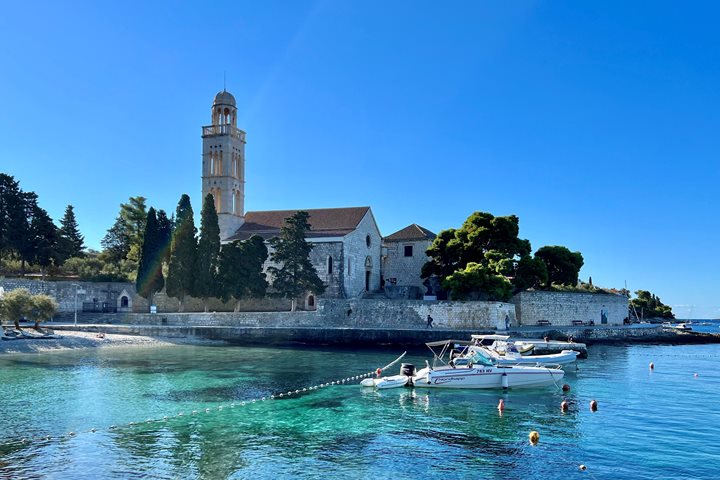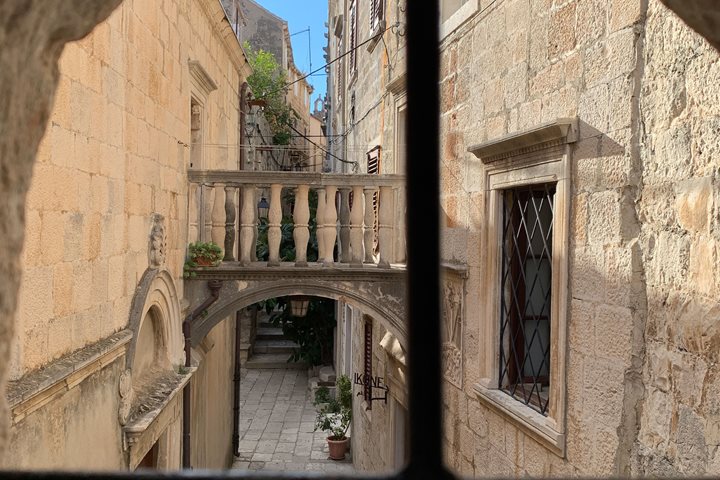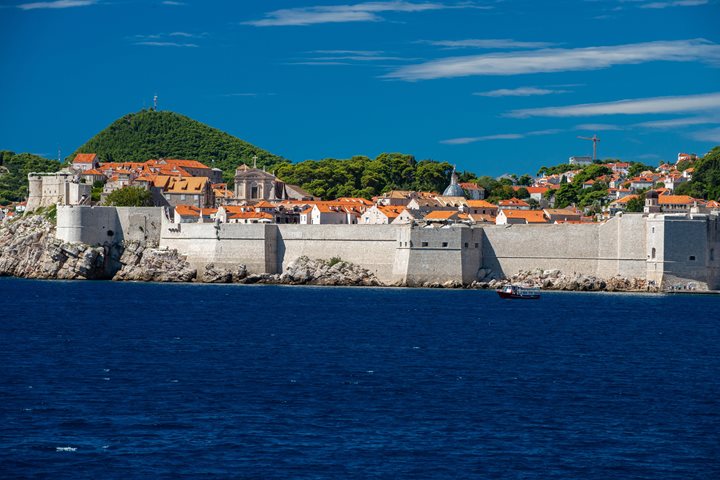This morning dawned, the sky was a slate grey with low clouds on the horizon. The sea swells were five feet with a wind of seven on the Beaufort scale (34 knots per hour). I think most of us were surprised to see the sails hoisted, but the sailors on the Sea Cloud always want to sail. They went to their stations, and the lower top sails went up at 8:15 a.m. We were making about 7.7 knots under sail with a following sea on our way to the magical island of Hvar. Eric Skogg gave a fascinating lecture on photography. After a short break Petra Noesvic treated us to a wide-ranging and informative presentation on modern Croatia.
The settlements on the island of Hvar are very old. The earliest inhabitants of this island are lost in the midst of antiquity but can be dated to the late Neolithic period about 4000 B.C. The early Greek settlers who arrived at the end of the fourth century B.C. found an Illyrian community already well established. As you would expect the two communities eventually came into conflict resulting in a war in which the Illyrians were defeated. The Greeks founded the present city of Stari Grad (=old city) and called it Pharos, which means “light” and Hvar Town which they called Dimos. Most of these early Greek settlers came from the Ionian island of Paros. These early Greek cities of Hvar and Stari Grad were independent of one another and were based on the Greek idea of the polis.
The Romans followed the Greeks in the early third century B.C. and the Slavs came in the eighth century and renamed the island Hvar in an attempt to render the sound of the Greek “Pharos” into Slavic.
We landed in the harbor of Stari Grad at 2:15 p.m. The weather initially was nice, but then it rained and the sea rose along the quayside. Despite the weather we had a wonderful visit. As we saw, the architecture of the present city of Stari Grad is, however, deeply indebted to the Venetians who ruled this entire Adriatic coast from the 13th century until the 18th century. The houses and Renaissance palaces are made of a luminous limestone, which becomes more beautiful as it ages. The streets framed with graceful palms and the small alleys beckoned to us as we made our way through the labyrinth of small lanes. The houses of the quaint old city of Stari Grad date mostly from the 15th and 16th centuries but some contain ancient stones and artifacts from the Greek settlement. Our ancestors did not waste building materials but simply recycled them. The most interesting building is that of Tvrdalj a fortified Renaissance palace built in the mid-1550s by the aristocratic poet Petar Hectorvić. It is noteworthy for its internal salt-water ponds where Hectorvić practiced aquaculture. We also had a fine visit to the museum of the Dominican Priory where we saw Greek amphorae, Roman tombstones “Dis Manibus” (“to the many gods”) medieval manuscripts, and a fine painting of the Pieta by the Venetian master Tintoretto.
We concluded our delightful day with cocktails followed by a scrumptious welcome captain’s dinner.









